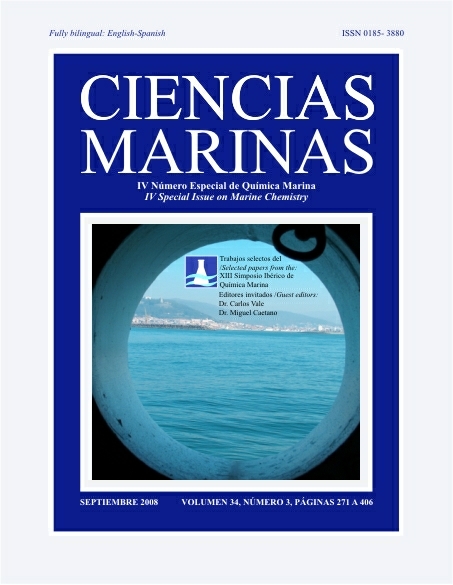Retention and partitioning of polycyclic aromatic hydrocarbons in Sarcocornia fruticosa from two Portuguese salt marshes
Main Article Content
Abstract
Sixteen PAH compounds (containing three to six rings) were quantified in sediments from the Rosário and Mitrena salt marshes in the Tagus and Sado estuaries, respectively, colonized by Sarcocornia fruticosa, and in belowground and aboveground plant tissues. Sediments from Rosário presented higher PAH concentrations (0.83–8.71 µg g–1) than those from Mitrena (0.22–1.63 µg g–1). Levels in belowground plant tissues showed a pronounced contrast between the two marshes: 84–165 and 0.15–0.43 µg g–1, respectively. Belowground material in contaminated layers contained 9–55 times more PAHs than sediments, while ratios lower than one were obtained in lower contaminated layers. Five- and six-ring compounds predominated (60–75%) in sediments and belowground plant material from both sites. Aboveground plant tissues presented no differences in PAH concentrations (0.17–0.18 ng g–1) and composition in both marshes, only three- and four-ring compounds being detected. This narrow concentration range appears to indicate that atmospheric deposition is the predominant pathway of PAH accumulation in aerial plant tissues.
Downloads
Article Details
This is an open access article distributed under a Creative Commons Attribution 4.0 License, which allows you to share and adapt the work, as long as you give appropriate credit to the original author(s) and the source, provide a link to the Creative Commons license, and indicate if changes were made. Figures, tables and other elements in the article are included in the article’s CC BY 4.0 license, unless otherwise indicated. The journal title is protected by copyrights and not subject to this license. Full license deed can be viewed here.

